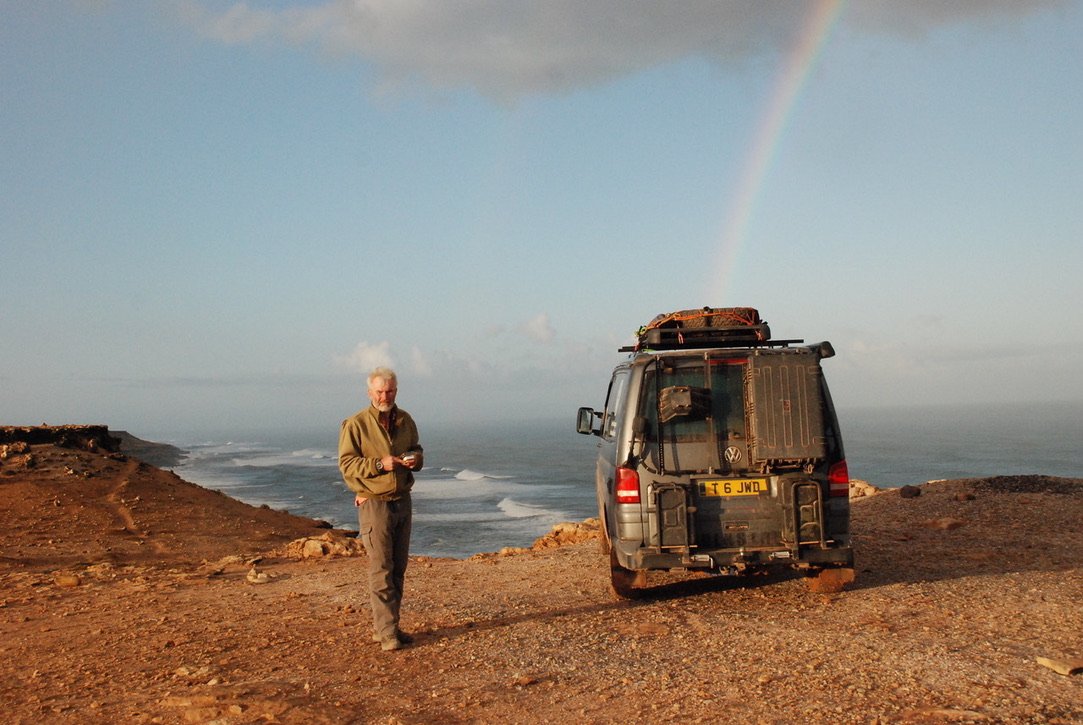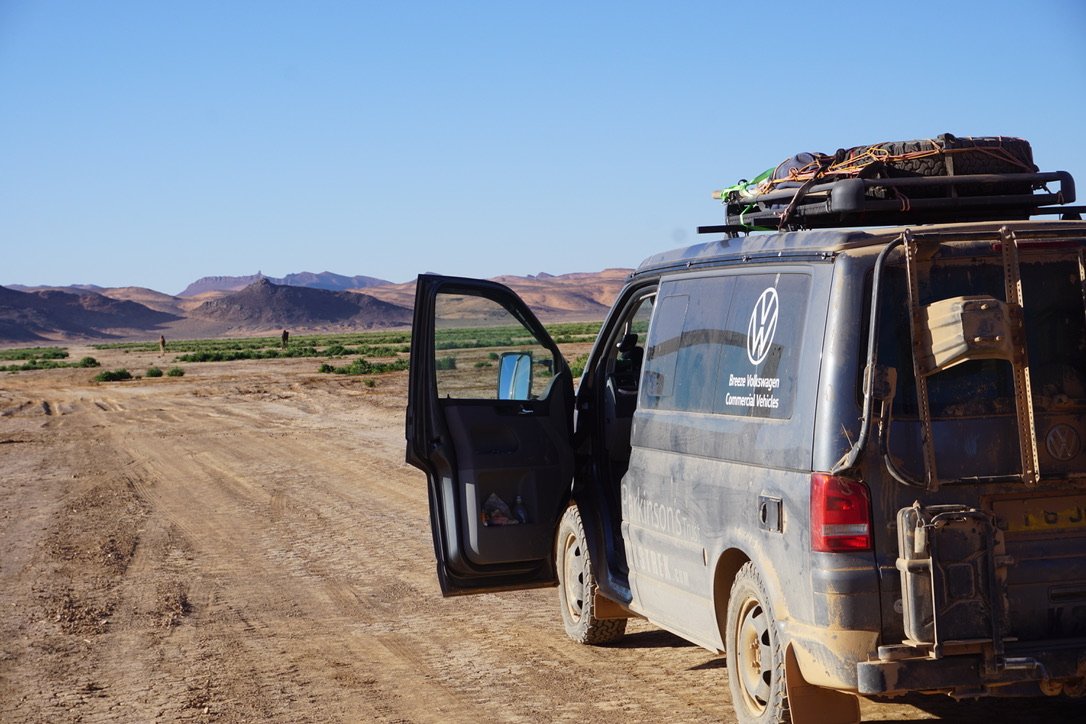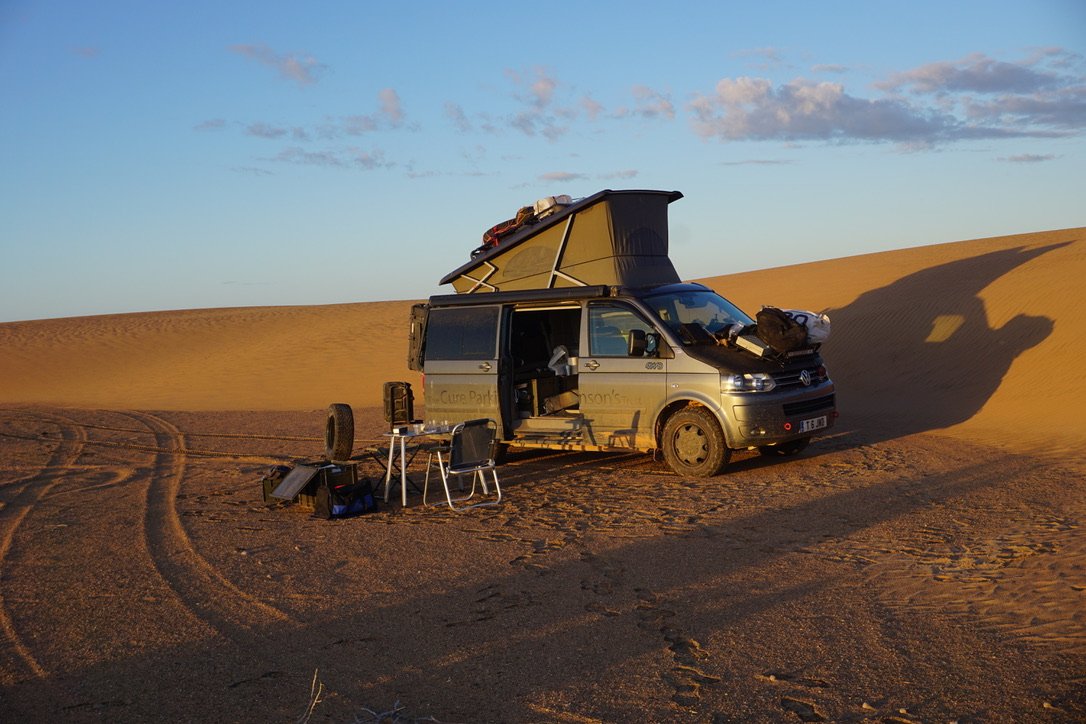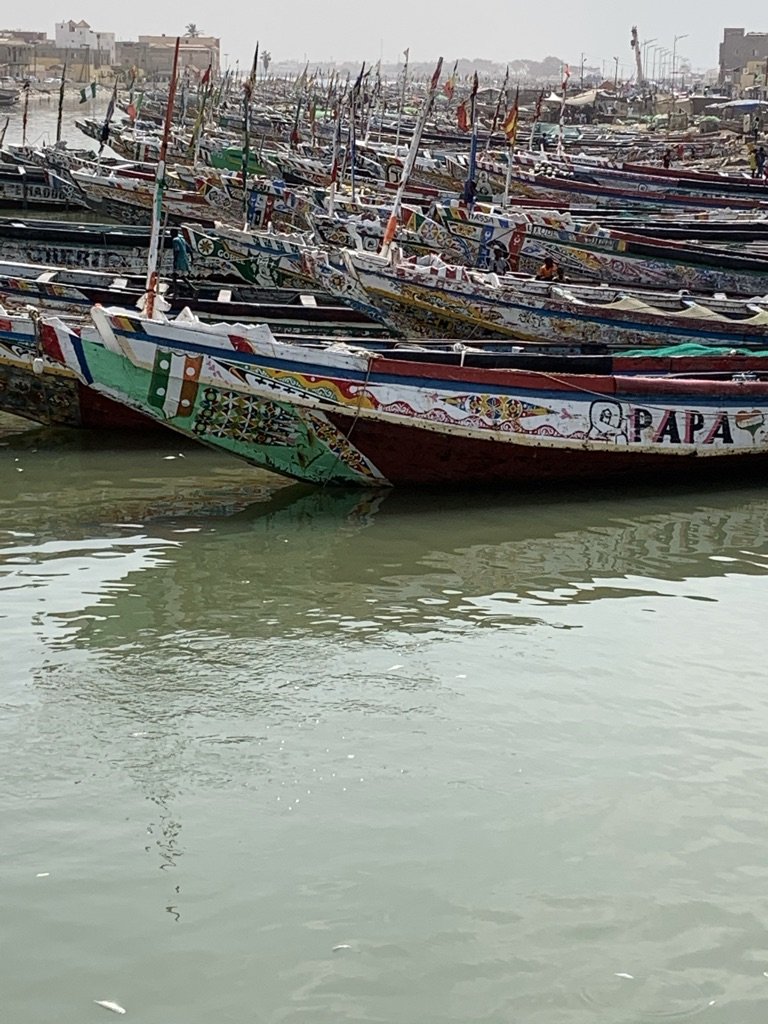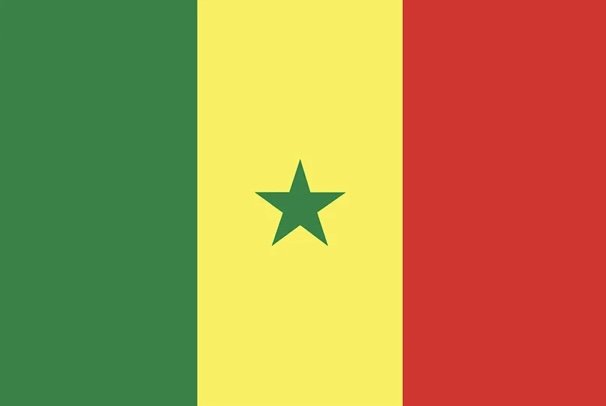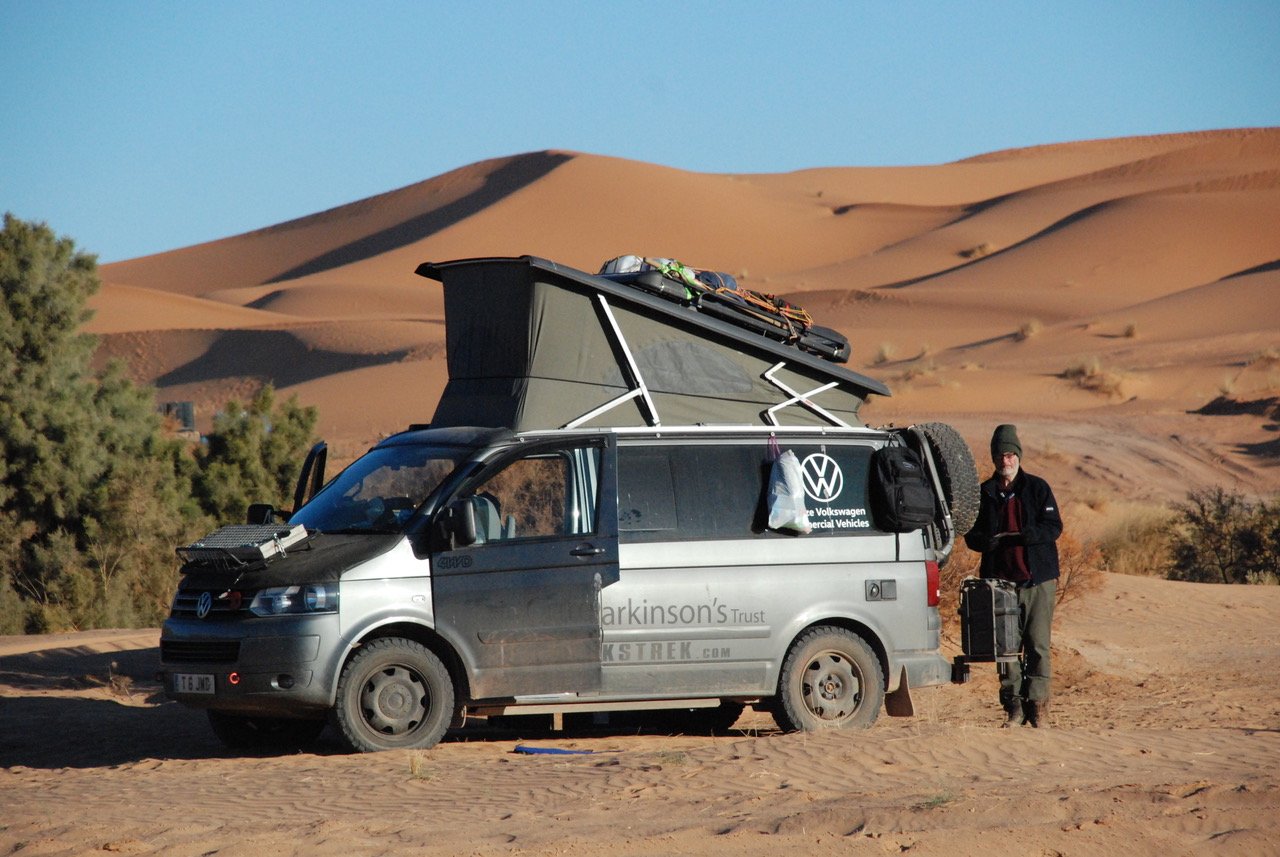
NORTHERN AFRICA
Morocco - Western Sahara – Mauritania – Senegal - Gambia
Dominated by the Sahara, this seemingly endless desert landscape is dominated by sand and sand dunes. In this region, much of the terrain is rock strewn gravel plains, hills and rocky mountains. It is generally hot but with very cold nights. There is little water and settlements are few and far between. This is a place to find real solitude.
Morocco
Morocco is a wonderful country and easy to visit from Europe. No visa is required prior to arriving at the border. Guy crossed from Algeciras to the enclave of Ceuta (Spanish). The roads in Morocco are good with a number of motorways and its therefore possible to cover significant distances in quick time. However, as time was not an issue for Guy, he explored the area to the north of Morocco and the foothills of the Atlas Mountains, ticking off such ‘must dos’ as the blue city of Chefchaouen and Larache prior to arriving in Rabat. As the administrative capital of Morocco, Rabat is a well organised, modern and clean place. Shops are plentiful and include the best known French supermarkets.
Moroccans are friendly people and Guy never once felt threatened, indeed quite the opposite. The Muslim tenet of looking after travellers played to his situation. The tourist business is well developed with a host of options from desert experiences to walking in the High Atlas. Wanting to visit Merziuga and the Erg Chebbi, primarily to test the wagon, he decided to head east over the Atlas Mountains to the Algerian border. He then followed the border for several days. This proved demanding terrain but Guy was keen to replicate a trip he had made to Algeria some 30 years earlier. He eventually hit the main road leading to the Western Sahara, formally known as the Spanish Sahara.
Western Sahara
The road to Layoune, the capital, is straight and in reasonable condition, albeit passing through somewhat featureless countryside. The only points of punctuation are provided by the number of police vehicle checkpoints demanding the same details every 10 miles or so. There is also a remarkable 60-mile conveyor belt crossing over the road bringing phosphates to the port for export.
Western Sahara has, after many years of armed dispute, only recently opened up to foreign and transit travellers. It is a friendly country with little there except sand and beach. The capitol, Layoune, is a combination of ancient Arab architecture and sparkling modern Moroccan investment. Morocco controls 80% of the country, leaving it stable and safe. Today, tourists are attracted to Dakhla in the south where conditions are excellent for windsurfing and kitesurfing. With tourists rarely venturing further south, this was the last place before the Ivory Coast that Guy saw any other overlanders.
Mauritania
Crossing into Mauritania is an experience - and the first place where Guy had to pay a bribe. For a significant cost to ‘park in the police compound’ while in fact there was plenty of space elsewhere. But despite a certain amount of chaos and confusion, life was made easier by a generous pool of helpers, all available for just a small sum.
From the border, Guy made his way to Nouhibou, the northernmost town and port in the country. A bustling city, and with the added attraction of two cashpoints, it was a useful stopping off point before heading onto Nouakchott. Despite it being January, conditions were hot and dusty and the poorly maintained road stretched ahead as straight as an arrow. Flat ground meant unending views and for many hours there was nothing. Just the odd speed bump and pot-hole to discourage drivers from losing concentration.
Nouakchott is spacious and busy and with several guest houses. But it does not cater well for visitors so, with no real reason to stay, Guy decided to move on making his way south towards the Senegalese border. Given the size of Mauritania, this was a two-day journey during which time the environment changed completely from an arid and typically Saharan landscape to the Sahel where landscapes were punctuated with stunted trees and watercourses. Settlements and wildlife became more noticeable, with better food available and even music. By the time, Guy reached The Djoudj Bird Reserve that borders Senegal, Mauritania was feeling a very different country.
To avoid the trucks, the hectic border controls and a ferry which came with a very bad reputation, Guy opted to take the smaller bridge crossing into Senegal. A rough track led to the river marking the border. It took about two hours to cross over the bridge and get into Senegal with St Louis his next destination.
Senegal
Senegal is the western most country in Africa, and very French. After a day in St Louis, itself a colourful and bustling fishing port, Guy set off on the relatively short drive to the capital, Dakar, where he had been given a reliable and helpful contact.
The traffic was dreadful, made worse by major re-development affecting most roads into the city. Guy was arriving at dusk and trying to follow directions on his phone (which had the habit of falling onto the floor when most needed!). But he arrived safely and began what turned out to be a three-week stay in the capital just a few hundred yards from the beach and the island of N’gor. This was the first place where Guy had to stop to obtain visas for subsequent onward countries. But he was happy to spend time in this culturally rich country. Well known for music, Senegal boasts excellent food as well as other artistic attractions. And with the van in good order, Guy was able to relax and soak up the joys of being in one of Africa’s most inviting cities whilst also making the odd excursion along the coast or into the hinterland. Despite its reputation as a first-class destination, Guy saw few Europeans except for the presence of a reasonably strong French community. With its well developed infrastructure and service sector, and with all the main towns connected by excellent roads, even ‘peage’ motorways (albeit there were still some troublesome police to negotiate), by and large Senegal is one of those countries where living is easy.
Gambia
Guy did not need to visit Gambia but he was keen to do so. A quirk of history means that this country is little more than the River Gambia with a band of terrain on either side of the river. Otherwise it is completely surrounded by Senegal. The story goes that the land borders were defined by the distance that the Royal Navy could cover with guns fired from their gunboats on the river – such is the colonial history and rivalry of the British and French in previous centuries.
Entry to Gambia was straightforward with two routes to Banjul, the capital, one on the north side of the river and the other to the south. Guy chose the north route which was less busy and included a ferry journey across the mouth of the river. At this point, the river is substantial and the crossing from Barra was scheduled to take about 40 minutes. As normal, Guy was the only European queuing to get onto the boat and it did not look as if many people would be joining him for the crossing. However, when the pedestrian gates opened, a huge swell of people materialised from nowhere, filling the boat until passengers were literally spilling over the sides. Those in vehicles could hardly move and Guy certainly could not even open his wagon door. He imagined the English newspapers reporting back on the boat sinking with an unknown number of passengers drowned (including himself!). But, despite his worst fears, Guy made the crossing safely to Banjul and found his host with whom he was staying for three days. Here he was able to spend time enjoying the beach and bird watching; giving him time to recharge his batteries before moving on across southern Senegal to Guinea Bissau.
